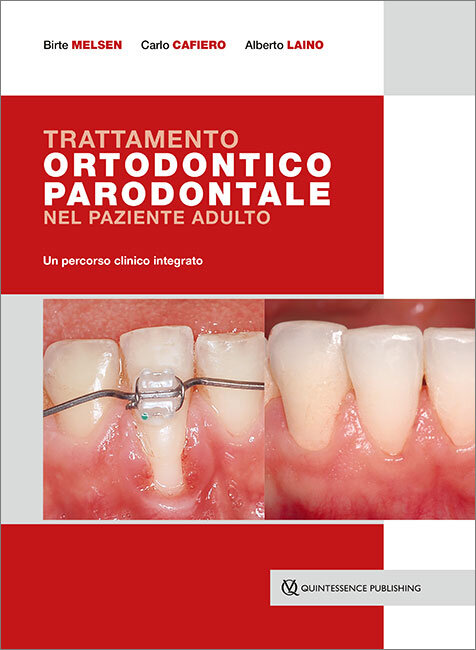The International Journal of Oral & Maxillofacial Implants, 2/2007
PubMed ID (PMID): 17465346Pagine 213-225, Lingua: IngleseCattaneo, Paolo M. / Dalstra, Michel / Melsen, BirtePurpose: The aim of this study was to describe the stress and strain fields around orthodontically loaded dental implants using the finite element method and to evaluate the relationship between the generated strain and the biologic reaction expressed through histomorphometric parameters. Finally, this study aimed to evaluate the interaction between the orthodontic loading and the deformation generated by normal occlusal function.
Materials and Methods: Sixteen titanium dental implants were inserted in extraction sockets after the removal of the second premolars and first molars of 4 adult Macaca fascicularis monkeys. After 17 weeks of healing, the implants were loaded by a pair of Sentalloy springs (50 cN) for 16 weeks. After sacrifice, tissue blocks including the implants and surrounding bone were excised. Five tissue blocks were scanned with a synchrotron radiation-based microtomography (µCT) scanner and sample-specific finite element models were generated. Subsequently all samples were prepared for histomorphometric analysis.
Results: All implants were osseointegrated, although the surrounding alveolar bone differed from sample to sample. As a consequence the finite element analyses showed that the stresses and strains in the peri-implant alveolar bone greatly varied among the samples. A high level of remodeling activity was found close to the implants. Discussion: Individual differences between the receptors (in this case, the monkeys) have a large effect on both the biologic and morphologic parameters. These variations were indeed found to have a substantial impact on the (re)modeling dynamics and the load transfer mechanisms around the implants.
Conclusions: By integrating different analysis techniques to evaluate bone (re)modeling around orthodontically loaded implants, this study has demonstrated the complexity and case-specific character of alveolar adaptation to orthodontic loading. Furthermore, stresses generated by combined functional and orthodontic forces should not be neglected. (More than 50 references)
Parole chiave: biomechanics, dental implants, finite element analysis, histomorphometry, osseointegration
The International Journal of Oral & Maxillofacial Implants, 3/2005
Pagine 387-398, Lingua: InglesePretorius, J. A. / Melsen, Birte / Nel, J. C. / Germishuys, P. J.Purpose: The authors' aim was to perform a histomorphometric study of the healing of bone defects created adjacent to titanium and hydroxyapatite (HA) -coated implants and covered with either a resorbable or a nonresorbable membrane in combination with different filler materials and to evaluate to what degree coating, membrane, and/or filler influenced the healing of the defects.
Materials and Methods: Posterior teeth were extracted from the mandibles of 10 baboons, and 12 implants were placed in each animal in the edentulous areas. The implants were either titanium or HA-coated, the membranes were either Vicryl, Gore-Tex, or Resolut, and the filler was either demineralized freeze-dried bone (DFDB), autogenous bone, or Biocoral. The implants were observed for either 3, 6, 9, 12, or 18 months. The volume of newly generated tissue and the relative contribution of bone, marrow, and filler were evaluated, as was relative extension of resorption, formation, and quiescent surface.
Results: The results indicated that autogenous bone is still the gold standard, but both the DFDB and Biocoral compared favorably to it. Both filler materials were being gradually replaced by bone; this process was not yet finished at 18 months postsurgery.
Discussion: Since even the sterilization of DFDB cannot exclude the possibility of a disease transmission, it is important to find an appropriate substitute. Both filler and membranes contributed to the re-establishment of the original volume; better results were achieved with the Vicryl and Gore-Tex membranes than with the Resolut. Biocoral can be considered an effective material.
Conclusion: A bony defect is not necessarily a contraindication for the placement of an implant. (More than 50 references.)




